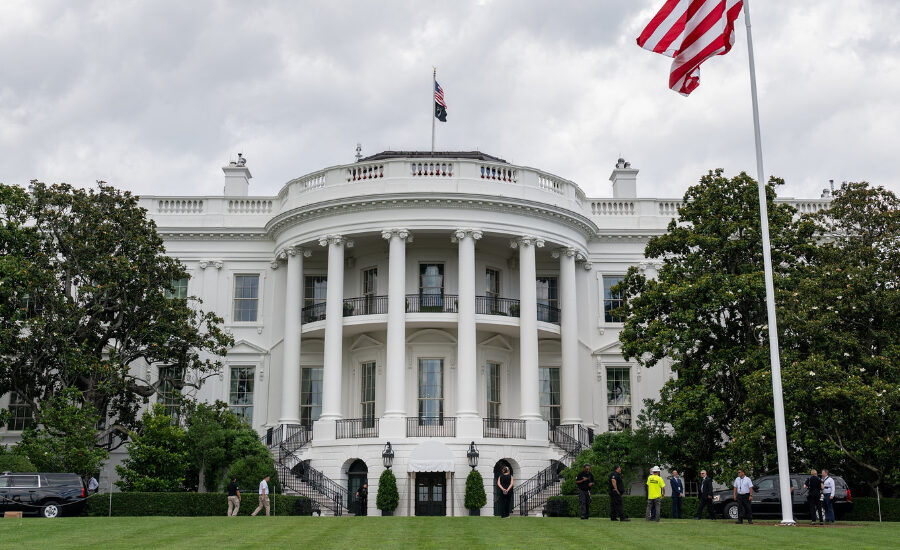
Updated NEPA Procedures Could Reshape Federal Environmental Reviews

Several federal agencies have recently announced revisions to their procedures under the National Environmental Policy Act that officials say will streamline reviews for projects to the benefit of contractors, though environmental advocates say reviews will be less open to public participation and may overlook projects’ impacts.
The changes reflect amendments made by Congress in 2023, an executive order from President Donald Trump earlier this year that directed officials to review existing regulations and practices and to “suspend, revise, or rescind all agency actions identified as unduly burdensome,” as well as an announcement from the White House Council on Environmental Quality (CEQ) that it would rescind its NEPA-related regulations. They also come in the wake of a recent Supreme Court ruling that limited the scope of NEPA reviews to environmental impacts directly tied to the project at its location, and not to indirect impacts elsewhere. The case dealt with a proposal to build a railroad in Utah to transport crude oil, which opponents said would have adverse effects near refineries in Louisiana and Texas.
Through a mix of staff handbooks, guidance and rulemaking, agencies including the Dept. of Transportation, Dept. of Energy, Dept.of the Interior, Dept. of Defense, Federal Energy Regulatory Commission (FERC), U.S. Army Corps of Engineers, Dept. of Agriculture and Dept. of Commerce all updated their procedures as CEQ rescinded its regulations, which previously directed the agencies’ procedures.
“These reforms replace outdated rules with clear deadlines, restore agency authority, and put us back on the path to energy dominance, job creation, and commonsense action,” Energy Secretary Chris Wright said in a statement.
The immediate impact of these changes is likely going to create uncertainty about how the agencies approach their NEPA analyses, says Ann Navaro, a partner specializing in environmental law at the firm Bracewell LLP. Going forward, it will be a question of how NEPA procedures evolve at each agency and for different types of projects.
Combined with other recent actions, such as the recent Supreme Court ruling and a provision in Congress’ budget reconciliation package that sets more aggressive deadlines to complete reviews if project owners opt in and pay a fee, the procedures “could drive the agencies to more streamlined reviews,” Navaro says. “But I think in any given project context, we will need to see how the agencies interpret their charge going forward.”
Contractors are anticipating faster timelines and smaller documents, says Spencer Phillips, counsel for regulatory litigation and advocacy at the Associated General Contractors of America.
“The biggest thing in the new procedures is a strict adherence to the statutory guardrails, mainly page and time limits, both of which we’re hugely in favor of,” Phillips says. “It should make permitting timelines a lot faster.”
But following the agencies’ announcements of their new procedures, some environmental advocates shared concerns that the changes could remove public participation from reviews and weaken regulators’ ability to consider climate change, environmental justice and other key issues.
“NEPA—the people’s environmental law—plays a vital role in ensuring that government decisions are transparent, well-informed, and accountable to the public,” said Andre Segura, vice president of litigation at Earthjustice, in a statement. “Collectively, [these] actions reverse that promise and fundamentally undermine the public’s ability to participate in federal decision-making processes.”
Still, developers may find that the updates don’t mean their projects will quickly zip right through all required approvals. Mark Christie, chair of FERC, said in a statement that the commission will ensure its reviews “are legally durable so projects stand up in court and get built.”
Varying Approaches and Common Elements
The different agencies used varying approaches in their new procedures, though they share common elements established by the law itself. But they also vary on points that are not specified by statute, such as the extent of public comment on draft environmental impact statements required as part of the review process.
NEPA does not set the length of time that public comment should remain open. For FERC, the comment period should “generally” last 45 days, according to its new staff guidance on implementing NEPA. At the National Highway Traffic Safety Administration, Transportation Dept. procedures state that it must allow 30 days for comment on public documents in most cases. Meanwhile, the Interior Dept.’s NEPA handbook directs that officials should request comments from relevant federal, state, tribe and local government agencies, plus the applicant—and “may” request comments from the public, but officials are not obligated to—with a 30-day window to obtain any comments.
“Under the old CEQ regulations, every agency was required to provide for public comment on a draft environmental impact statement,” Navaro says. “That requirement is not in the statute, and the CEQ regulations are now gone. So in these new procedures, most agencies have made that public comment opportunity discretionary with the agencies to decide in any particular situation.”
Another common element across the different agencies is the inclusion of page limits for environmental assessments and environmental impact statements. The 2023 amendments to NEPA stipulated that EAs should generally not exceed 75 pages, and EISs should top out at 150 pages, or 300 pages in cases of “extraordinary complexity,” not including appendices. Reviews have frequently exceeded these limits. During the first Trump administration, a CEQ report found that final EISs issued between 2013 and 2018 averaged 661 pages, and their appendices averaged another 1,042 pages.
In addition to taking less time to prepare, Phillips says smaller documents may also mean reviews stand up better to legal challenges.
“The bigger the document, the bigger the evidentiary record, the slower everything gets,” he says. “The court gives the parties more time to comb through everything.”
The updated procedures contain other elements that will help hasten reviews, Phillips says. They call for increased collaboration between agencies, states and tribes to prevent duplicative reviews for the same project. Plus, agencies will now be sharing categorical exclusions, which should benefit contractors by allowing more projects’ applications to move through an expedited review process, he adds.
Corps of Engineers Procedures
The U.S. Army Corps of Engineers is unique among agencies updating their NEPA procedures because officials say they will follow two sets of guidelines. For most civil works, the Corps will follow the general Defense Dept. procedures. However, the Corps also published its own procedures to use when reviewing applications under the Clean Water Act and the Rivers Harbors Act, and for its own Water Resources Development Act projects.
The updates will “reform, modernize, and expedite the Corps of Engineers’ environmental reviews, eliminating unnecessary delays, and will help ensure the growth of secure and reliable infrastructure projects across the nation,” said Lee Forsgren, acting assistant secretary of the Army for civil works, in a statement.
Post a Comment
You must be logged in to post a comment.





